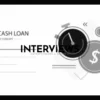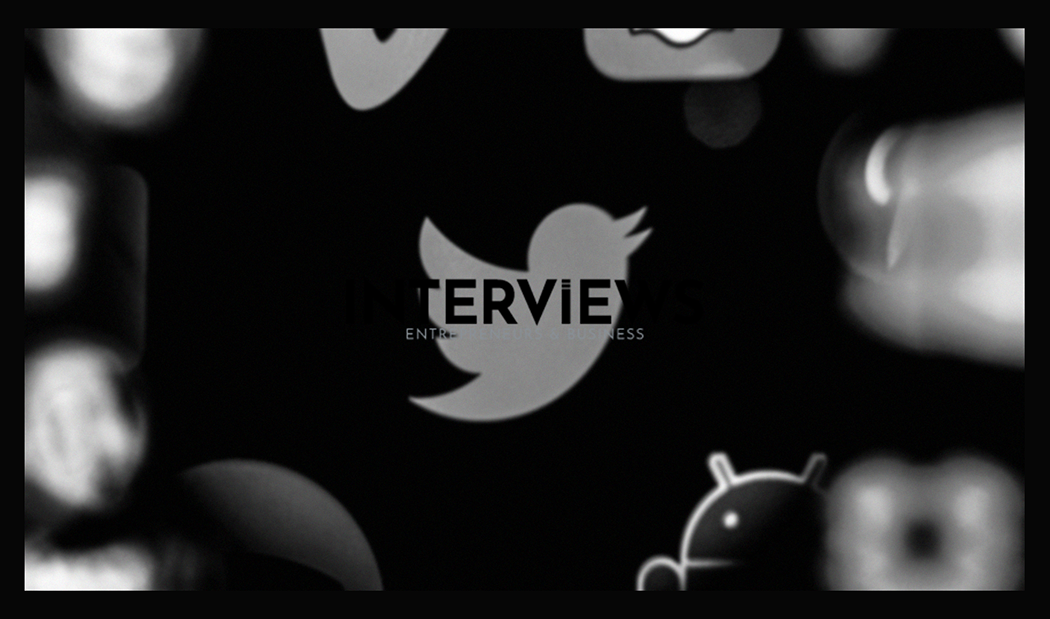Mastering Twitter for Business: Tweets That Click and Accounts That Convert
Business owners, it’s time to take Twitter seriously. This platform is not dead. Twitter is challenging you to tweet smarter, not louder. It’s like an espresso shot. Quick and potent. When done right, it boosts brand visibility.
Why care about Twitter? It’s crucial for brand awareness, lead generation, and customer service. No more lengthy discussions. Let’s focus on strategies to turn your Twitter into a lively space for ideas and sales.
Tweets That Impress & Engage
Ready to elevate your tweets? First, understand random tweets are ineffective. You need a refined Twitter marketing strategy. This is your battle plan. Define your goals. Are you seeking website traffic? Customer engagement? Aim for clarity.
Next: create valuable content. Followers want substance, not fluff. Solve issues, share insights. Aim for a “mini-masterclass” in 280 characters. Make every tweet count.
Engagement is key. Grow your followers by interacting. Treat followers like friends. Nurture these relationships, and they’ll share your message. Remember, engagement requires effort.
What about hashtags? Use relevant hashtags to enhance visibility. Hashtags are crucial for discoverability. Use them wisely to connect with ongoing discussions.
Out of tweet ideas? Don’t worry. Repurpose your content. Utilize blog posts, articles, and podcast snippets. Transform them into tweet-sized nuggets. Work smarter, not harder.
Decoding the Perfect Tweet
Crafters of tweets aim for those that are
Provide clickable content. Every tweet requires a purpose. Drive traffic or promote a blog post. Make it easy for followers to engage further.
Focus on catchy tweets. Create engaging content. The perfect tweet has the following attributes:
- Front-loaded: Capture attention with the strong message first.
- Scannable: Keep it simple. Use short sentences and get to the point.
- Specific: Offer actionable insights. Vague tweets disappear.
- Active: Use strong verbs. Ditch fluff words.
- Focused: Stick to one clear message.
- Compelling: Make followers want to engage.
- Short: Brevity enhances impact.
- On-brand: Reflect your brand’s voice consistently.
Want eye-catching tweets? Get creative with your tweet copy. Experiment with styles and tones. Choose impactful hashtags for exposure. Visuals are powerful: use images and videos. Tweets with visuals have higher engagement. Humor through GIFs can also help.
Use Twitter’s poll feature. Polls boost engagement by gathering quick feedback. For longer narratives, use Twitter Moments. Curate compelling stories there.
Tweet Like a Pro From Day One
New to tweeting? No problem. Writing tweets for beginners is simple. Click the “new tweet” button. Type your message in the box. Twitter is quick and instant; don’t overthink it.
For announcements, craft effective announcement tweets. Keep it concise and direct. Avoid jargon and lengthy paragraphs. Use visuals for more impact.
The formula for a perfect tweet: clarity + conciseness + visuals + call to action + relevant hashtags + humor + questions/polls. Mix these for engaging tweets.
Turning Your Twitter Profile Into a Lead-Generating Machine
Tweets alone aren’t enough. Your Twitter profile represents your business online. Optimize your business Twitter accounts.
First, switch to a professional account. Click “Switch to professional” in settings. Why? Business accounts have better analytics and tools than personal accounts offer. It’s like a flight upgrade – more perks.
Create a professional profile. This is crucial for first impressions. Use a clear photo, representing your brand. Write a compelling bio with keywords. Think of SEO when crafting it. Include a link to your website too.
Now, let’s discuss growing your business Twitter account. Consistent effort leads to growth; avoid seeking instant fame. Follow these seven commandments:
- Create a Brand Voice: Define your brand’s personality, either witty or serious.
- Post Content With Value: Repeat it: Value wins.
- Post Content Often: Consistency is vital; aim for 3-5 tweets daily.
- Use Hashtags: They help discoverability.
- Interact With Your Audience: Reply to comments and engage positively.
- Practice Social Listening: Monitor discussions to engage with ongoing conversations.
- Stay informed about your industry, brand, and competitors. Observe what people say and find trends. Join in on discussions that matter.
- Run Paid Ads: For quick growth and targeting, Twitter Ads work well. It suits special campaigns or finding new audiences.
Lastly, optimize your profile. Make sure it’s complete. Fill every section, keep it up-to-date, and show your brand accurately. Choose a relevant username. It should be easy to remember and find, ideally close to your brand name or website.
Content Strategy That Doesn’t Suck: Actually, It Should Be Great
Content fuels your Twitter. What content works best? Let’s explore the best content types for engagement. Surprisingly, images often beat videos. Even more surprisingly, text can outperform images. Twitter leans on text. Use list-based or how-to content. These formats share easily and are digestible. Oddly, quotes often do better than questions. Quotes give instant value. Questions require effort.
We discussed hashtag effectiveness. So remember: use relevant hashtags. Moderation matters. Don’t overload tweets with them. Tap into trending topics when suitable. Ensure it connects with your brand and message. Don’t force relevance.
Utilize visuals. They matter. Images, GIFs, and videos grab attention on Twitter. Visuals break up text and convey info better. Think visually.
Maintain a consistent online presence. Avoid being a social media ghost. Regular posting sets audience expectations. Stay top-of-mind. Share content that interests your audience. Keep on-brand. No random cat videos if you aren’t in the cat business (unless it fits).
Don’t forget to tweet links to blogs/websites. Drive traffic back to your content! If you have a blog or valuable content, tweet an engaging summary and a link. Tease the content, make it intriguing, and encourage clicks.
Twitter is a Conversation, Not a Broadcast: Learn to Engage (or Get Ignored)
Twitter isn’t a one-way channel; it’s a vibrant public square. Engaging with the community builds relationships and enhances influence.
First, actively engage with followers. Respond timely to questions and comments. Retweet relevant tweets from followers. Show you care about their input.
Don’t just communicate with followers; interact with influencers. These are leaders in your field. Connecting with them boosts your brand exposure. Engage with their content and join their discussions. Build real relationships.
The goal is building relationships. Social media is social. Don’t view Twitter merely as marketing space; see it as a chance to connect people and form a community around your brand.
Interestingly, Twitter is great for customer service. Invite followers to tweet questions about your business. Respond quickly and helpfully to concerns. Publicly addressing issues can build trust.
Lastly, practice social listening. Monitor discussions about your brand and industry. Use tools for tracking keywords and hashtags. This helps you see what people say and find chances to engage in conversations.
Business vs. Personal Twitter: Know the Difference (Before You Post That Cat Meme)
Unsure if to choose a business or personal account? It’s simple but has key differences. A business account offers great benefits: access to analytics for measuring performance and understanding your audience, plus advertising tools for campaigns. Think of it as a tool for serious marketing.
Personal accounts are for casual use. Connect with friends, share thoughts, and engage socially. You
No matter the account type, remember to express your brand personality. Share content your audience desires while maintaining your brand voice. Authenticity and consistency matter, whether personal or business.
Are Your Tweets Actually Working? Measuring Success (Without Crying)
How to gauge if Twitter efforts pay off? It’s about measuring success and growth. Begin with defining what a successful tweet looks like. Engagement rate is crucial – an engagement rate between 0.09% and 0.33% is “good.” Strive for higher engagement. More likes, retweets, and replies indicate interaction.
Aim for high engagement: collect likes, retweets, replies. These represent the pulse of a healthy Twitter profile. Tweets with high engagement reach larger audiences and aid growth.
Most businesses want to increase followers. To hit 1,000+ followers, tweet consistently (without overdoing), provide valuable content, engage in discussions, and use relevant hashtags. It’s a marathon, not a sprint.
Finally, track tweet views. More views indicate success in reaching audiences. It reflects visibility and reach.
Twitter’s Dark Side: Challenges and How to Survive Them
Twitter has challenges worth noting.
The limited character count can restrict messaging potential. Crafting complex ideas within 280 characters is tough. Keep it brief but sometimes depth suffers.
The noise and competition are significant. Twitter sees constant content streams which make standing out difficult. You must be strategic and consistent to be heard.
Prepare for negative feedback. Online negativity happens regularly. Create a plan for handling criticism effectively and professionally. Avoid Twitter arguments; they rarely help.
Twitter takes time. Building a strong presence requires ongoing effort. Allocate time for content creation, community management, and engagement.
Privacy concerns exist across social media, and Twitter is not an exception. Be conscious of public shares and familiarize yourself with privacy settings.
Toxicity is another concern. Twitter can foster negativity and harassment. Form strategies to combat toxicity for your brand and community.
Twitter for Business: What’s the Point, Really?
Before diving into Twitter, understand what’s important for your business use. Develop your strategy. Set objectives – are you handling customer questions or building your brand? Define goals before tweeting.
Know your audience. Who do you want to reach? Understanding targets helps tailor your messages.
Use Twitter for brand awareness. It showcases your name and message to new audiences effectively.
Create strategies for driving traffic to your site through Tweets that promote leads. Direct calls to action can convert followers into potential customers.
Reputation management is vital on Twitter. Monitor mentions of your brand and address concerns promptly.
Tweeting too can help promote other social networks. Cross-promote online connections.
Twitter can even boost sales. Use sales promotions and direct links to products for generating revenue.
Finally, keep up with trends and news on Twitter. It provides real-time updates on industry changes and competitor movements that impact your business.
Pro-Tweeting Tips: From Rookie to Rockstar (Almost)
If you want to elevate your Twitter game, stay tuned for more insights.
Twitter game? Here are some best practices for professional use.
Showcase your skills. Use tweets to display knowledge. Share insights and perspectives. Establish yourself as a thought leader in your field.
Make it personal. People connect with people. Avoid faceless corporations. Add personality and authenticity to your tweets. Share glimpses, personal stories (if appropriate), and humanize your brand.
However, don’t be pushy. Too much self-promotion can repel followers. Provide value instead. Engage in conversations and build relationships. Promotion should happen naturally, not as the main goal.
Technical Tweeting: Hidden Tricks (Including Silence!)
Now, let’s get technical. Publishing tweets is easy – we’ve discussed that. But did you know you can post tweets with nothing in them? Yes, with the invisible U+3164 HANGUL FILLER character, you can tweet… silence. Use cases? That’s up for debate, but it’s a fun fact. Twitter now allows editing tweets – a feature users long wanted. Typos can be fixed!
Twitter for Small Businesses: Your Secret Tool (Maybe)
Is Twitter useful for small businesses? Yes, it is. It’s a cost-effective platform for customer service, allowing businesses to offer support and build loyalty publicly.
For marketing local businesses, Twitter’s location features are powerful. Target your audience, promote local events, and connect with your community in real-time.
Tweets and the Law: Copyrights and Trademarks (Oh My!)
A quick look at legal issues: copyright protection. Yes, surprisingly, a tweet can receive copyright. Original tweets, especially creative ones, can be protected. Be aware of copyright when sharing and protect your own original tweets.
Also consider trademarking. Protect your brand name and logo, which also applies to your Twitter presence.
When to Tweet: Timing Matters
Now for posting frequency and timing. We know
What about optimal posting times? Studies show the best times are generally in the morning (9 am to 11 am) and 3 pm on weekdays, and early afternoon to evening (9 am to 8 pm) on weekends. Test posting times to find what fits your audience.
Twitter Isn’t the Only Bird: Other Options to Explore
Twitter isn’t the only platform available. Consider other social media options. Facebook, for instance, is known as a “great platform for deeper engagement” – think communities and richer content formats.
The best platforms for you ultimately depend on your business goals and audience. Don’t rely solely on one blue bird; broaden your social media presence wisely.
Money Matters: How Twitter Earns Cash
Ever wondered how Twitter survives financially? Their business model relies on advertising revenue. Promoted tweets and ads in timelines are crucial income sources.
They also earn from data licensing. Aggregated and anonymized Twitter data proves valuable for market research. Companies pay Twitter for access to this data.
This is a detailed look at mastering Twitter for business. It’s more than tweeting; it’s about strategy, content, engagement, and understanding the platform’s ecosystem. Now go ahead and tweet… with purpose!





